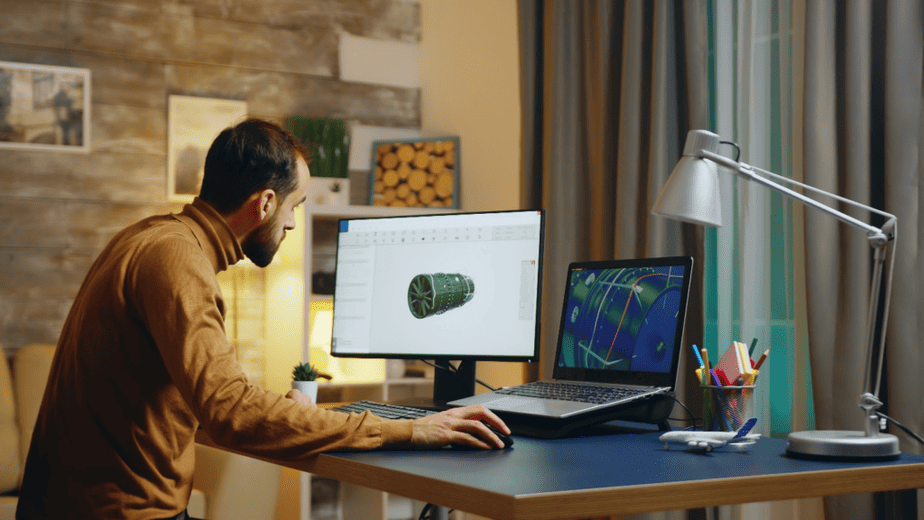CAD drafting has come a long way since its inception, evolving from traditional 2D drawings to the immersive world of 3D modeling and beyond. 3D CAD. It has revolutionized the design industry, allowing engineers and architects to draw cad with accurate and detailed models with ease.
It has spared up the design process. Had made it easier to collaborate with multiple teams. Moreover, 3D CAD
drafting has made it possible to create complex designs that would have been impossible in 2D.
The Origins of CAD Drafting
CAD drafting, or Computer-Aided Design drafting, has its origins in the 1960s when computers were used for
designing and drafting purposes. Before the advancement of CAD, architects, engineers, and designers relied on
manual drafting techniques. They used tools such as pencils, rulers, and drafting boards to create precise
technical drawings.
However, these manual methods were time-consuming and prone to errors. The introduction of CAD software
changed the design industry by allowing professionals to create and modify drawings digitally, increasing
efficiency and accuracy.
The Rise of 3D CAD Drafting
With the introduction of 3D CAD drafting, the design industry experienced a major shift in the way drawings
were created and visualized. 3D CAD software allowed designers to create three-dimensional models of their
designs, providing a more realistic and immersive representation of the final product.
This not only enhanced the design process but also improved communication between designers, clients, and
manufacturers. The ability to view a design from different angles and perspectives allowed for better decision-
making and problem-solving.
3D CAD drafting opened up new possibilities for innovation and creativity, pushing the boundaries of design
and revolutionizing industries such as architecture, engineering, and product design. Today, 3D CAD drafting
continues to evolve, with advancements in technology enabling even more realistic and complex designs to be
created.
What are The Benefits of 3D CAD Drafting?
With the help of 3D CAD software, designers can visualize their creations in three dimensions. It allows for a
better understanding of how the final product will look and function. This not only improves the design process
but also enhances communication between designers, clients, and manufacturers.
Additionally, 3D CAD drafting makes designers view a design from different angles and perspectives. It is more
facilitating better decision-making and problem-solving. The ability to create complex and intricate designs has
also opened up new possibilities for innovation and creativity.
What will be the Future of CAD Drafting?
While 3D CAD drafting has already revolutionized the design industry, the future holds even more exciting
possibilities. One area of development is Virtual Reality (VR) and Augmented Reality (AR) integration.
With VR and AR technologies becoming more accessible, designers will be able to immerse themselves in their
designs and interact with them in a whole new way. This will not only enhance the design process but also allow
for more effective collaboration and communication with clients and stakeholders.
Another area of advancement is the integration of artificial intelligence (AI) into CAD software. AI algorithms
can assist designers in generating design options, optimizing designs for specific criteria, and even predicting
potential design flaws.
What is The Impact of CAD Drafting on the Design Industry?
CAD drafting has had a profound impact on the design industry, revolutionizing the way designers create and
communicate their ideas. The shift from traditional 2D drafting to 3D modeling has allowed for more realistic
and accurate representations of designs, enabling designers to better visualize and communicate their concepts.
This has led to improved collaboration between designers, engineers, and other stakeholders, as everyone can
now easily understand and interpret the design intent. Additionally, CAD drafting has greatly increased
efficiency and productivity in the design process.
With the ability to easily modify and iterate designs, designers can quickly explore different options and make
changes as needed. This has resulted in faster turnaround times and reduced costs. Furthermore, CAD drafting
has opened up new possibilities for innovation and creativity.
